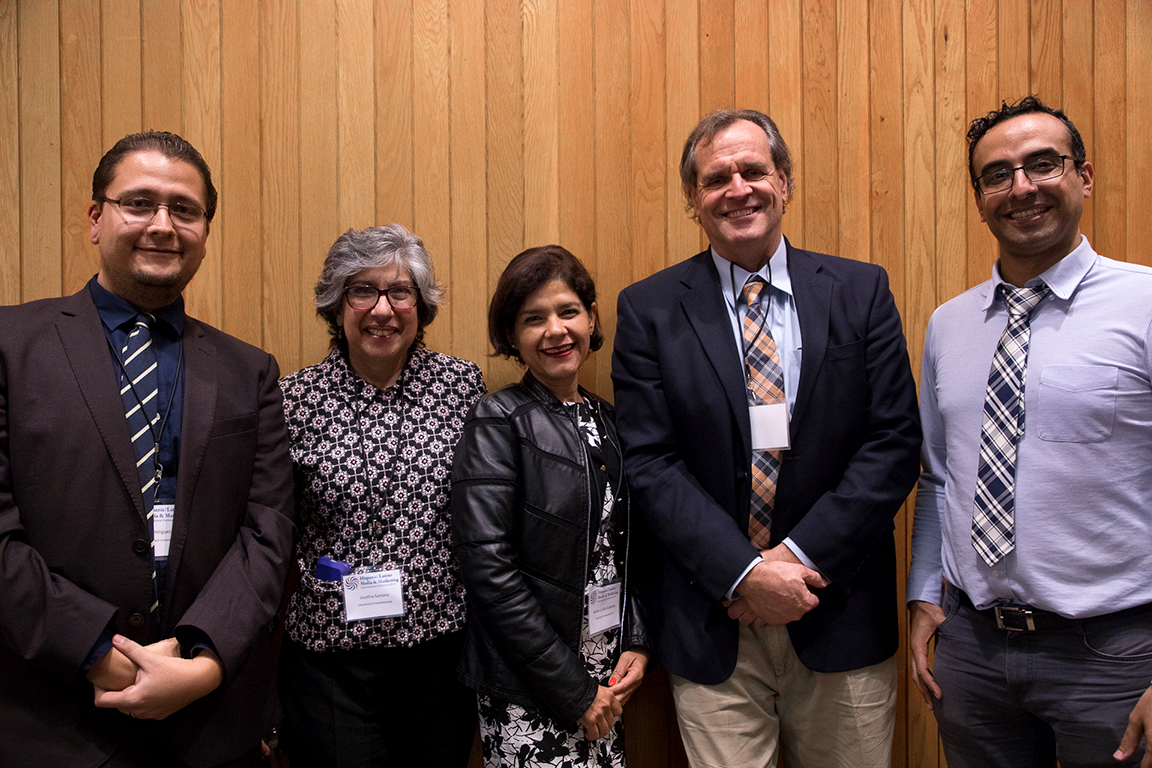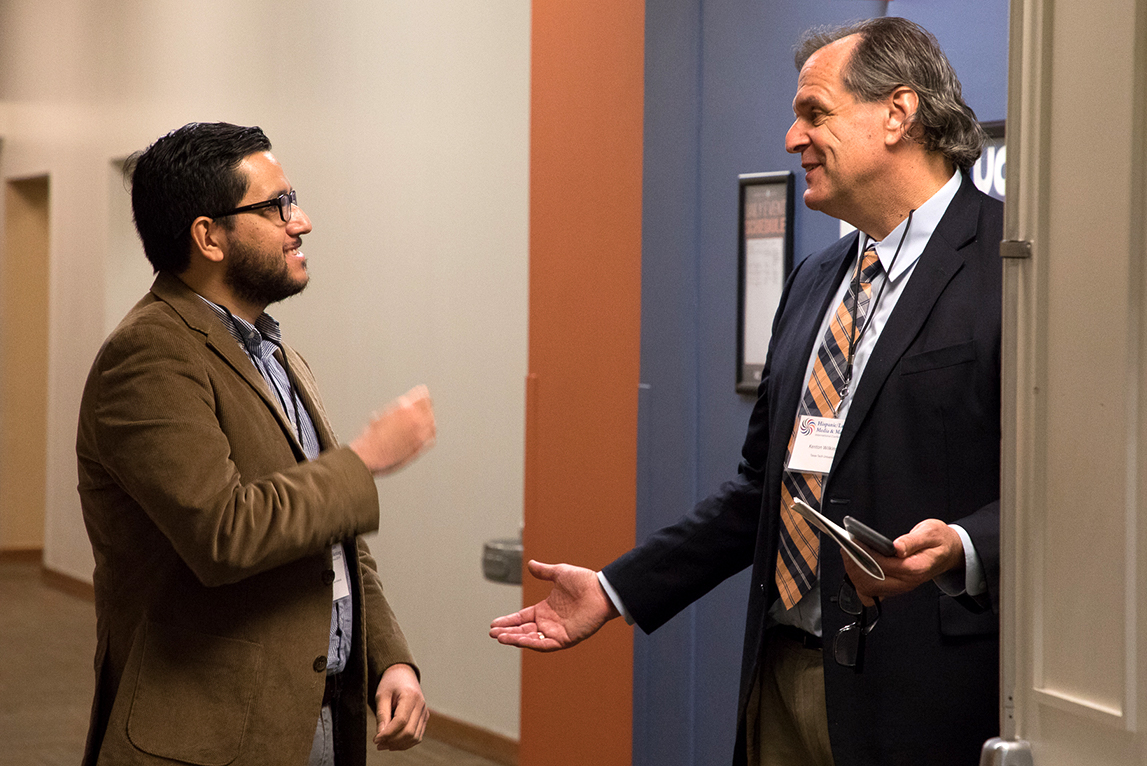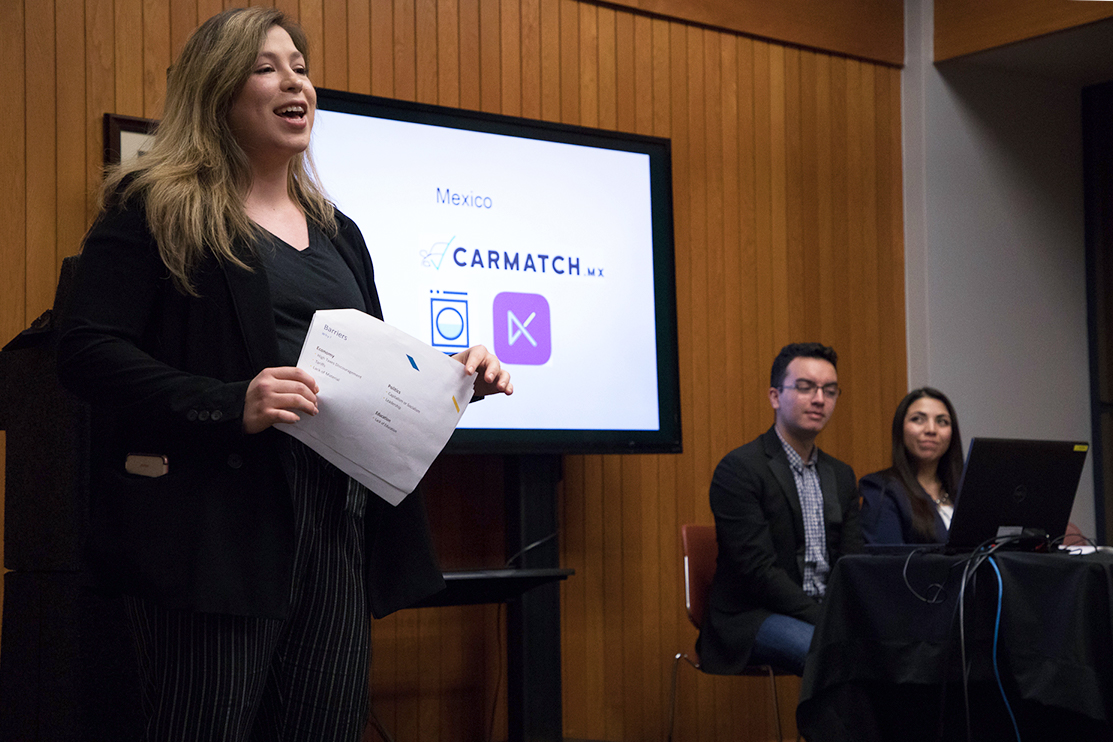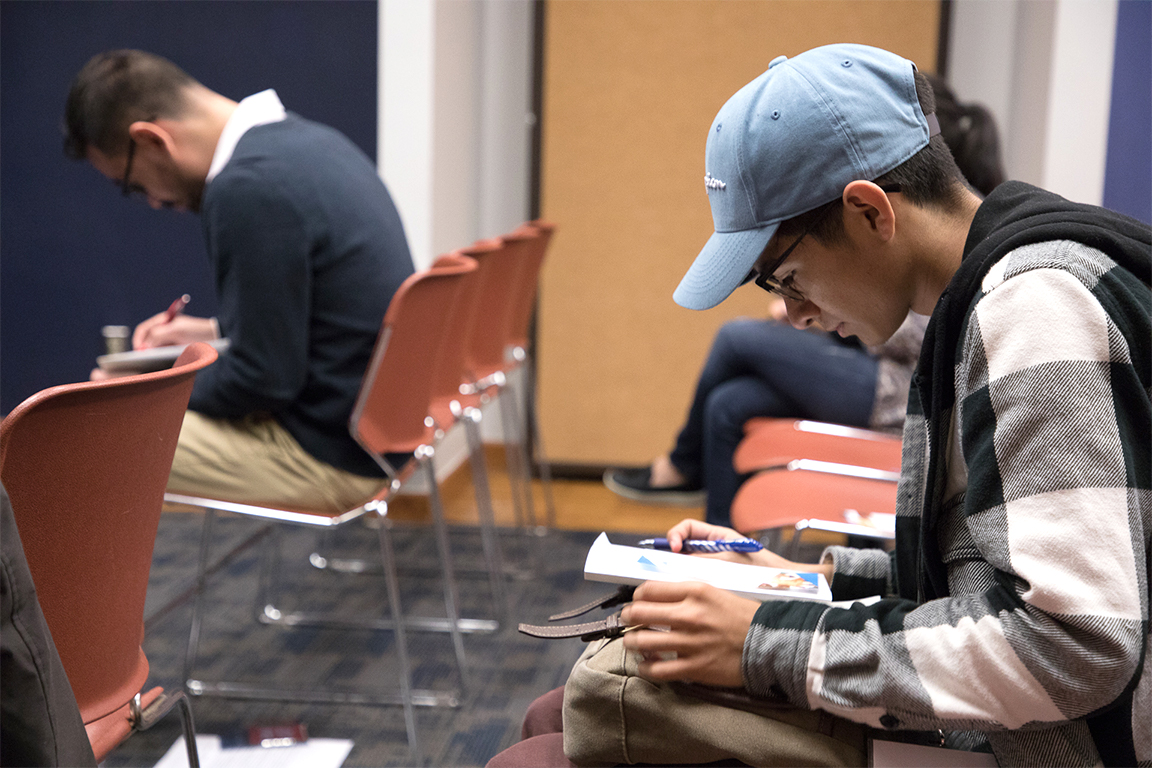
Faculty from the College of Media & Communication's Thomas Jay Harris Institute for Hispanic & International Communication and two dozen graduate and undergraduate students traveled to the University of Texas at Arlington on Feb. 21-23 for the Seventh Hispanic/Latino Media & Marketing International Conference.
Every two years, the conference brings academic researchers, industry professionals and students from across the nation together to discuss topics pertinent to the Hispanic/Latino community in media. The 2019 conference was cosponsored by the Harris Institute and the Department of Communication at the University of Texas at Arlington. The conference hosted keynote speaker Hugo Balta, president of the National Association of Hispanic Journalists.

(Hugo Balta, president of the National Association of Hispanic Journalists, speaking
on a panel at the Hispanic/Latino Media & Marketing International Conference.)
“We're an increasingly diverse nation,” Kent Wilkinson, Ph.D., director of the Harris Institute, said. “Someone studying communication is going to be in a workplace where it's not just people of their cultural and linguistic background. It's going to be people with different backgrounds, probably mostly with education in the United States and a good command of English, but that alone isn't enough for you to communicate effectively with them.
“If you know who they are and where they're coming from and how they view the world and their role in this complex thing that is the United States, you're going to be a more effective communicator,” he said.

(Kent Wilkinson, Ph.D., director of the Harris Institute, with Vinicio Sinta, a panel
moderator and conference attendee.)
Alberto Avendaño, president of Latino Impact Media and former editor of El Tiempo Latino (the Spanish publication of The Washington Post), spoke about the Latino experience in film, while Héctor Rendón, Ph.D., assistant director of the Harris Institute, moderated a panel on big data with guests from Pandora and LatinWorks.

(Sussy Ruiz, media professional and adjunct faculty at the University of North Texas, led a discussion about media platforms.)
“Hispanic America is about Americanness, not about Hispanicization,” Avendaño said. “Americanness is about the identity of the land. The problem with the Hispanic presence as an American presence is that it's a presence with a very unique culture that runs synchronic and embedded in the Anglo-English language culture.
“The cultural reality of the United States is that the U.S. Hispanic cultural presence does not exist under the diagram of ‘Para español, presione el dos' [For Spanish, press two]. That's not real. Nobody lives like that in the United States.
“Spanish exists in people who are bilingual, who, according to the census, are the majority of Hispanics in the United States. They coexist,” Avendaño added. “I speak English to someone downstairs and Spanish to someone upstairs. It happens at the same time. That's the reality.”

(Students attending the Hispanic/Latino Media & Marketing International Conference.)
Established in 2006, the Thomas Jay Harris Institute for Hispanic & International Communication promotes a better understanding of Hispanic-related and international media communication through research, teaching and community outreach. It is named after Thomas Jay Harris, a former editor of the Lubbock Avalanche-Journal, who was an advocate of international and cross-cultural education.
Read more college news.
